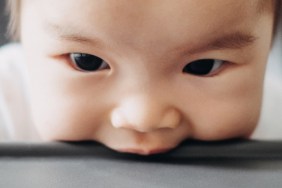There are two common types of thrush in babies: oral thrush and yeast diaper rash. These conditions may occur individually or at the same time, and they’re both caused by an overgrowth of yeast (caused by a fungus called Candida). Read on for everything you need to know about thrush, from thrush symptoms to treatments.








